Organisational Behaviour Report: Culture, Motivation, and Success
VerifiedAdded on 2020/10/22
|18
|3487
|430
Report
AI Summary
This report provides a thorough analysis of organisational behaviour, focusing on the application of theoretical models to understand and improve organisational effectiveness. The report begins with an executive summary and an introduction that outlines the key concepts of organisational behaviour and its importance in the business context. The report then delves into identifying organisational culture using Handy's model, exploring power, role, task, and person cultures, and applying these concepts to the Morrison company. Furthermore, the report examines how culture improves organisational effectiveness, particularly through communication models like the Shannon-Weaver and Transactional models, along with the factors that influence them. The role of culture in employee motivation is then evaluated, with a focus on Herzberg's motivation-hygiene theory and ERG theory. Finally, the report evaluates how the Morrison company could use its organisational culture to enhance its success, incorporating both primary and secondary research to support its findings. The conclusion summarizes the key insights and recommendations derived from the analysis.
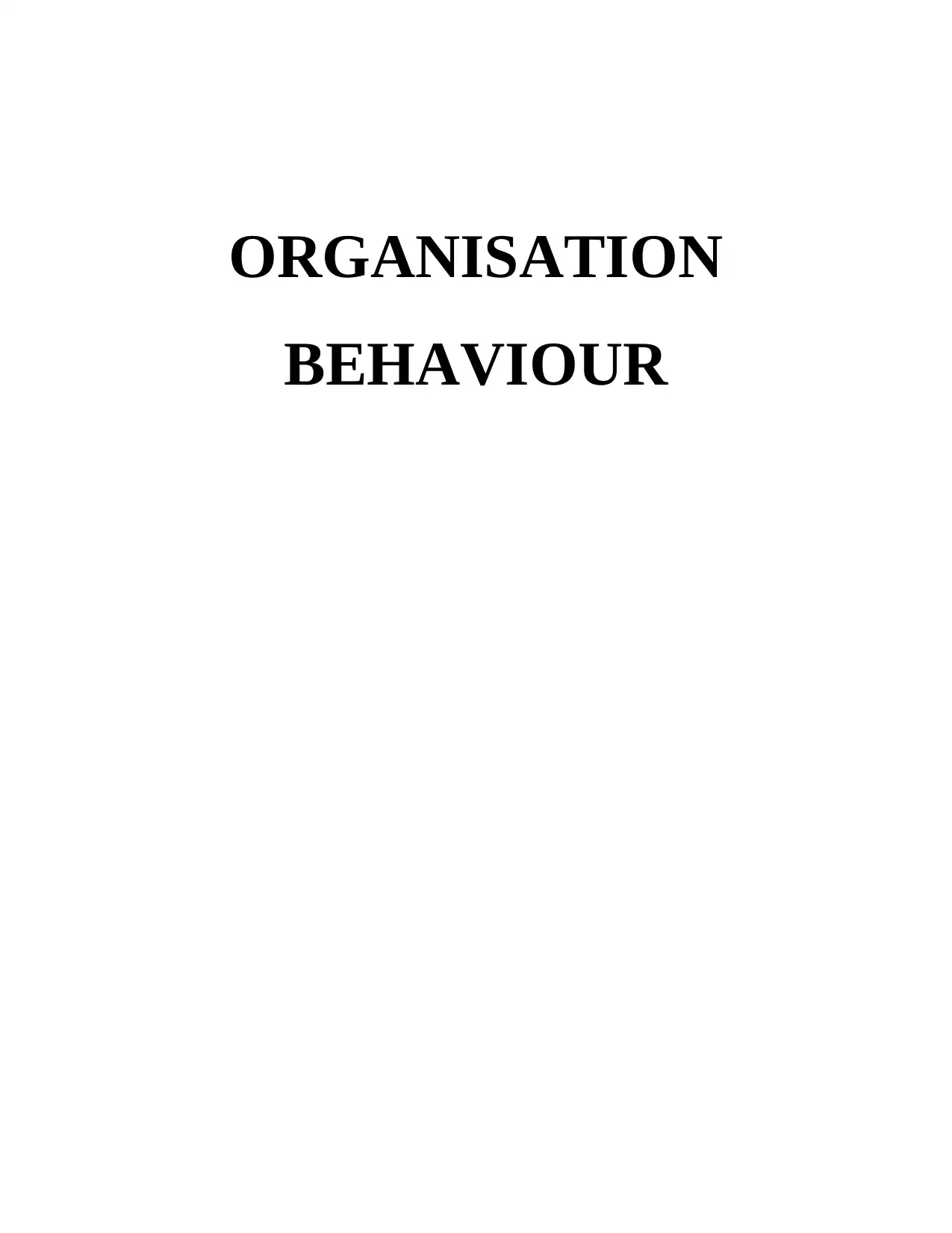
ORGANISATION
BEHAVIOUR
BEHAVIOUR
Paraphrase This Document
Need a fresh take? Get an instant paraphrase of this document with our AI Paraphraser
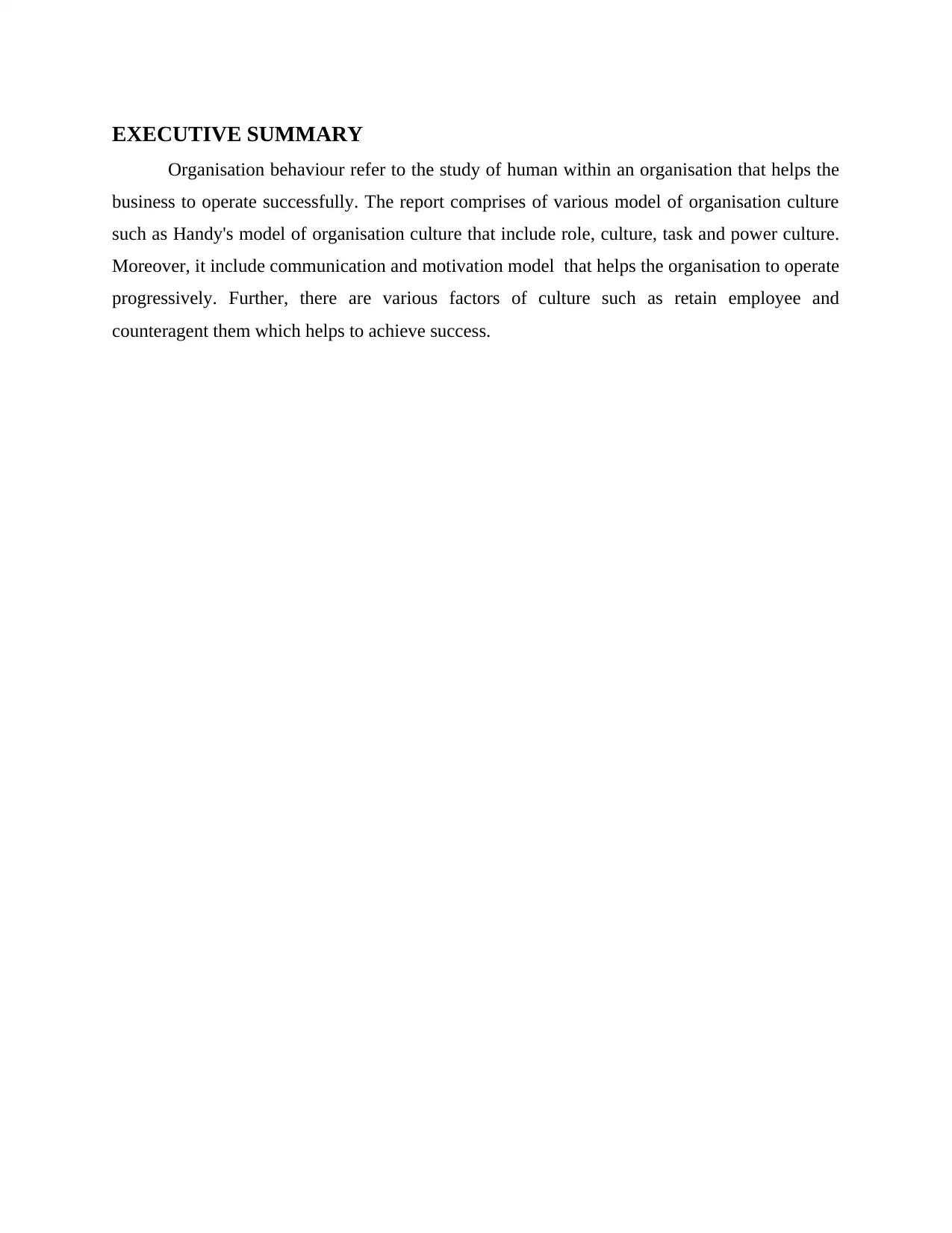
EXECUTIVE SUMMARY
Organisation behaviour refer to the study of human within an organisation that helps the
business to operate successfully. The report comprises of various model of organisation culture
such as Handy's model of organisation culture that include role, culture, task and power culture.
Moreover, it include communication and motivation model that helps the organisation to operate
progressively. Further, there are various factors of culture such as retain employee and
counteragent them which helps to achieve success.
Organisation behaviour refer to the study of human within an organisation that helps the
business to operate successfully. The report comprises of various model of organisation culture
such as Handy's model of organisation culture that include role, culture, task and power culture.
Moreover, it include communication and motivation model that helps the organisation to operate
progressively. Further, there are various factors of culture such as retain employee and
counteragent them which helps to achieve success.
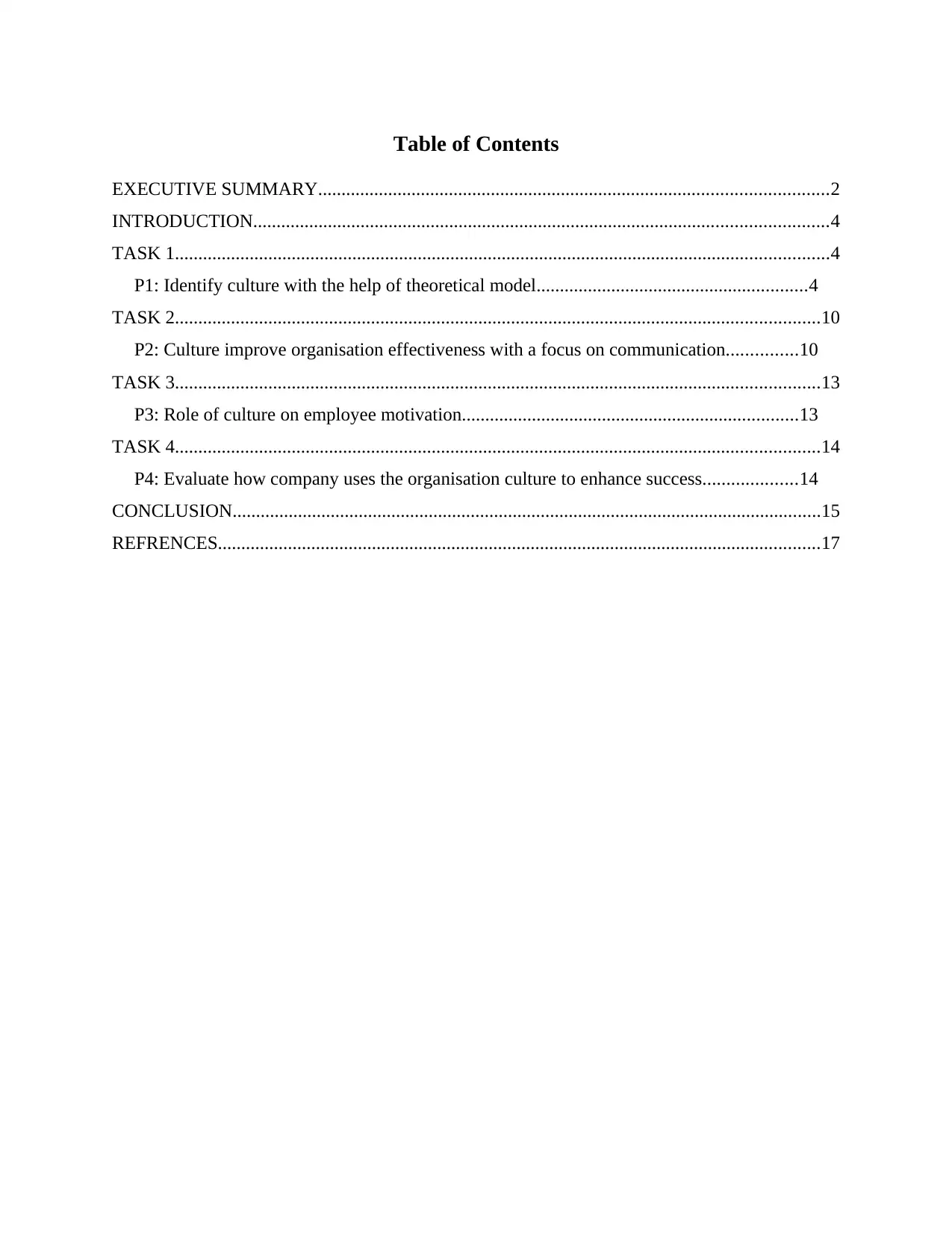
Table of Contents
EXECUTIVE SUMMARY.............................................................................................................2
INTRODUCTION...........................................................................................................................4
TASK 1............................................................................................................................................4
P1: Identify culture with the help of theoretical model..........................................................4
TASK 2..........................................................................................................................................10
P2: Culture improve organisation effectiveness with a focus on communication...............10
TASK 3..........................................................................................................................................13
P3: Role of culture on employee motivation........................................................................13
TASK 4..........................................................................................................................................14
P4: Evaluate how company uses the organisation culture to enhance success....................14
CONCLUSION..............................................................................................................................15
REFRENCES.................................................................................................................................17
EXECUTIVE SUMMARY.............................................................................................................2
INTRODUCTION...........................................................................................................................4
TASK 1............................................................................................................................................4
P1: Identify culture with the help of theoretical model..........................................................4
TASK 2..........................................................................................................................................10
P2: Culture improve organisation effectiveness with a focus on communication...............10
TASK 3..........................................................................................................................................13
P3: Role of culture on employee motivation........................................................................13
TASK 4..........................................................................................................................................14
P4: Evaluate how company uses the organisation culture to enhance success....................14
CONCLUSION..............................................................................................................................15
REFRENCES.................................................................................................................................17
⊘ This is a preview!⊘
Do you want full access?
Subscribe today to unlock all pages.

Trusted by 1+ million students worldwide
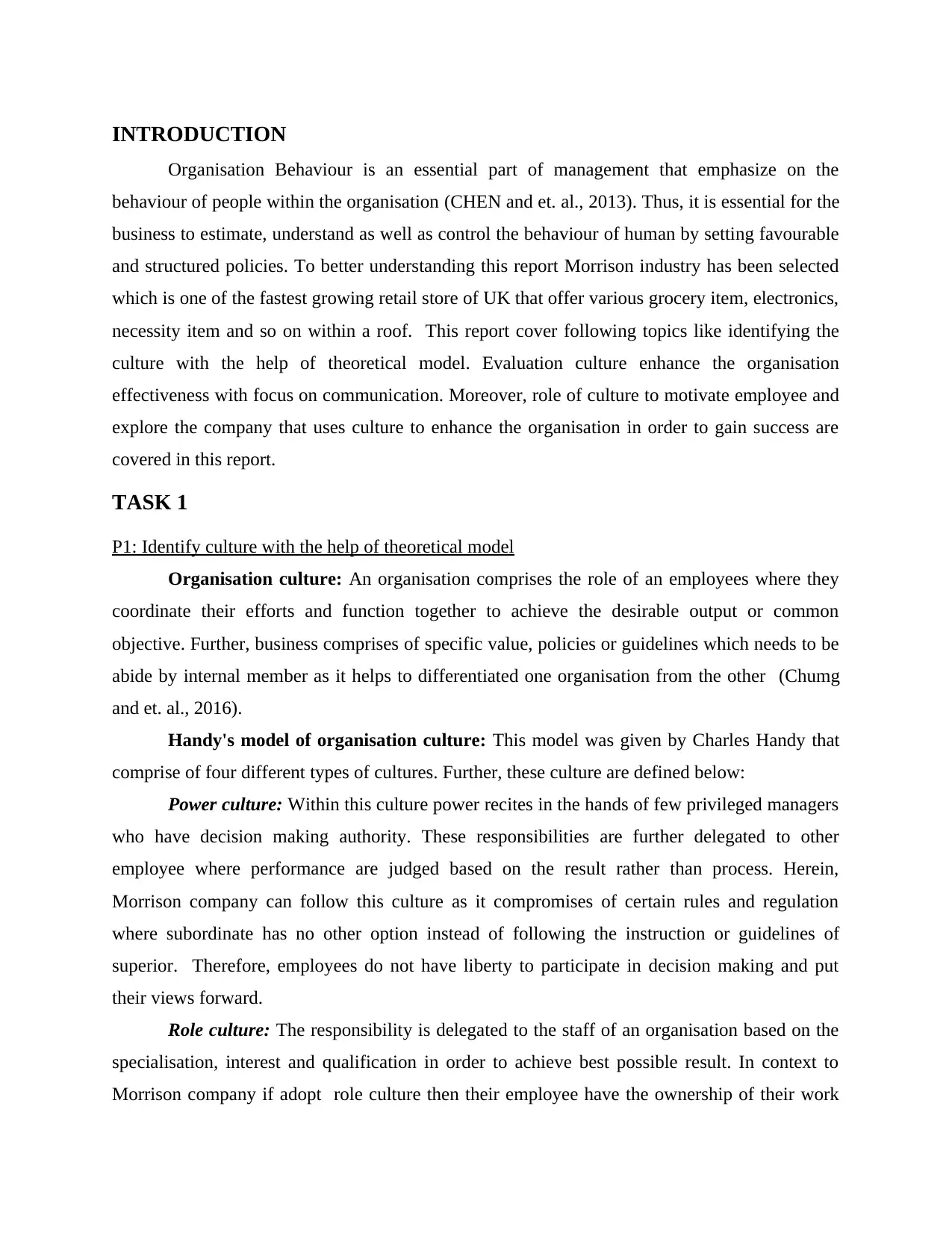
INTRODUCTION
Organisation Behaviour is an essential part of management that emphasize on the
behaviour of people within the organisation (CHEN and et. al., 2013). Thus, it is essential for the
business to estimate, understand as well as control the behaviour of human by setting favourable
and structured policies. To better understanding this report Morrison industry has been selected
which is one of the fastest growing retail store of UK that offer various grocery item, electronics,
necessity item and so on within a roof. This report cover following topics like identifying the
culture with the help of theoretical model. Evaluation culture enhance the organisation
effectiveness with focus on communication. Moreover, role of culture to motivate employee and
explore the company that uses culture to enhance the organisation in order to gain success are
covered in this report.
TASK 1
P1: Identify culture with the help of theoretical model
Organisation culture: An organisation comprises the role of an employees where they
coordinate their efforts and function together to achieve the desirable output or common
objective. Further, business comprises of specific value, policies or guidelines which needs to be
abide by internal member as it helps to differentiated one organisation from the other (Chumg
and et. al., 2016).
Handy's model of organisation culture: This model was given by Charles Handy that
comprise of four different types of cultures. Further, these culture are defined below:
Power culture: Within this culture power recites in the hands of few privileged managers
who have decision making authority. These responsibilities are further delegated to other
employee where performance are judged based on the result rather than process. Herein,
Morrison company can follow this culture as it compromises of certain rules and regulation
where subordinate has no other option instead of following the instruction or guidelines of
superior. Therefore, employees do not have liberty to participate in decision making and put
their views forward.
Role culture: The responsibility is delegated to the staff of an organisation based on the
specialisation, interest and qualification in order to achieve best possible result. In context to
Morrison company if adopt role culture then their employee have the ownership of their work
Organisation Behaviour is an essential part of management that emphasize on the
behaviour of people within the organisation (CHEN and et. al., 2013). Thus, it is essential for the
business to estimate, understand as well as control the behaviour of human by setting favourable
and structured policies. To better understanding this report Morrison industry has been selected
which is one of the fastest growing retail store of UK that offer various grocery item, electronics,
necessity item and so on within a roof. This report cover following topics like identifying the
culture with the help of theoretical model. Evaluation culture enhance the organisation
effectiveness with focus on communication. Moreover, role of culture to motivate employee and
explore the company that uses culture to enhance the organisation in order to gain success are
covered in this report.
TASK 1
P1: Identify culture with the help of theoretical model
Organisation culture: An organisation comprises the role of an employees where they
coordinate their efforts and function together to achieve the desirable output or common
objective. Further, business comprises of specific value, policies or guidelines which needs to be
abide by internal member as it helps to differentiated one organisation from the other (Chumg
and et. al., 2016).
Handy's model of organisation culture: This model was given by Charles Handy that
comprise of four different types of cultures. Further, these culture are defined below:
Power culture: Within this culture power recites in the hands of few privileged managers
who have decision making authority. These responsibilities are further delegated to other
employee where performance are judged based on the result rather than process. Herein,
Morrison company can follow this culture as it compromises of certain rules and regulation
where subordinate has no other option instead of following the instruction or guidelines of
superior. Therefore, employees do not have liberty to participate in decision making and put
their views forward.
Role culture: The responsibility is delegated to the staff of an organisation based on the
specialisation, interest and qualification in order to achieve best possible result. In context to
Morrison company if adopt role culture then their employee have the ownership of their work
Paraphrase This Document
Need a fresh take? Get an instant paraphrase of this document with our AI Paraphraser
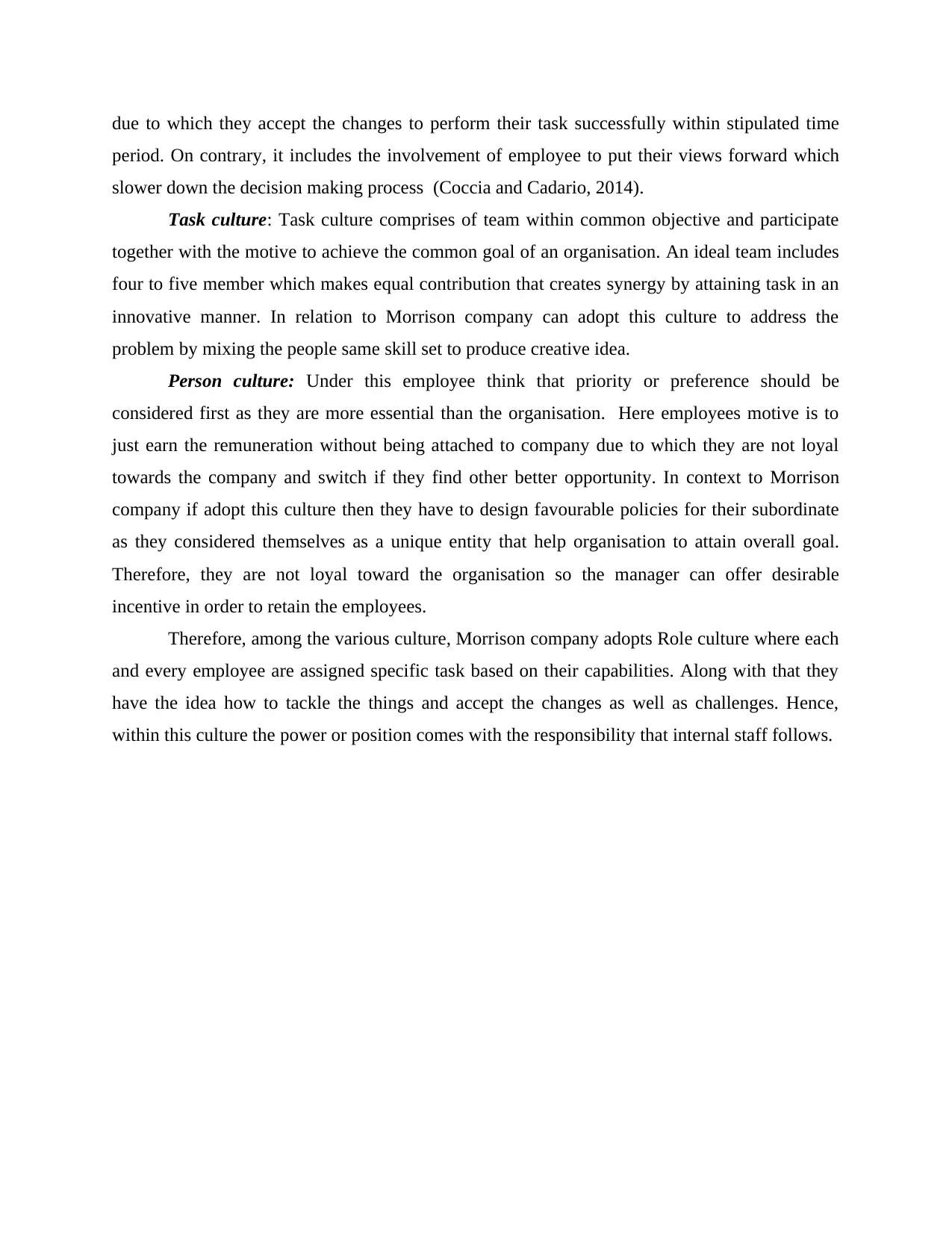
due to which they accept the changes to perform their task successfully within stipulated time
period. On contrary, it includes the involvement of employee to put their views forward which
slower down the decision making process (Coccia and Cadario, 2014).
Task culture: Task culture comprises of team within common objective and participate
together with the motive to achieve the common goal of an organisation. An ideal team includes
four to five member which makes equal contribution that creates synergy by attaining task in an
innovative manner. In relation to Morrison company can adopt this culture to address the
problem by mixing the people same skill set to produce creative idea.
Person culture: Under this employee think that priority or preference should be
considered first as they are more essential than the organisation. Here employees motive is to
just earn the remuneration without being attached to company due to which they are not loyal
towards the company and switch if they find other better opportunity. In context to Morrison
company if adopt this culture then they have to design favourable policies for their subordinate
as they considered themselves as a unique entity that help organisation to attain overall goal.
Therefore, they are not loyal toward the organisation so the manager can offer desirable
incentive in order to retain the employees.
Therefore, among the various culture, Morrison company adopts Role culture where each
and every employee are assigned specific task based on their capabilities. Along with that they
have the idea how to tackle the things and accept the changes as well as challenges. Hence,
within this culture the power or position comes with the responsibility that internal staff follows.
period. On contrary, it includes the involvement of employee to put their views forward which
slower down the decision making process (Coccia and Cadario, 2014).
Task culture: Task culture comprises of team within common objective and participate
together with the motive to achieve the common goal of an organisation. An ideal team includes
four to five member which makes equal contribution that creates synergy by attaining task in an
innovative manner. In relation to Morrison company can adopt this culture to address the
problem by mixing the people same skill set to produce creative idea.
Person culture: Under this employee think that priority or preference should be
considered first as they are more essential than the organisation. Here employees motive is to
just earn the remuneration without being attached to company due to which they are not loyal
towards the company and switch if they find other better opportunity. In context to Morrison
company if adopt this culture then they have to design favourable policies for their subordinate
as they considered themselves as a unique entity that help organisation to attain overall goal.
Therefore, they are not loyal toward the organisation so the manager can offer desirable
incentive in order to retain the employees.
Therefore, among the various culture, Morrison company adopts Role culture where each
and every employee are assigned specific task based on their capabilities. Along with that they
have the idea how to tackle the things and accept the changes as well as challenges. Hence,
within this culture the power or position comes with the responsibility that internal staff follows.
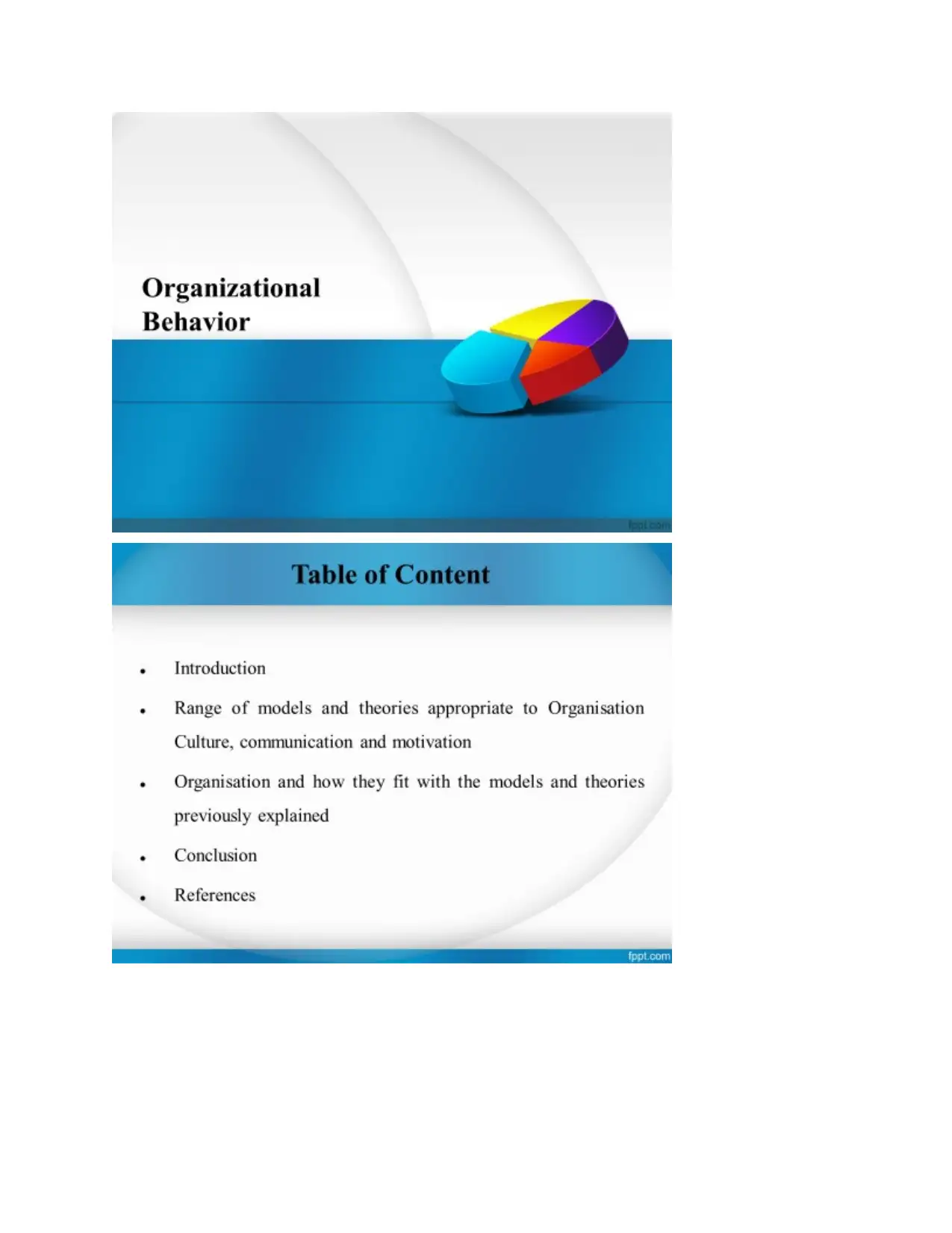
⊘ This is a preview!⊘
Do you want full access?
Subscribe today to unlock all pages.

Trusted by 1+ million students worldwide
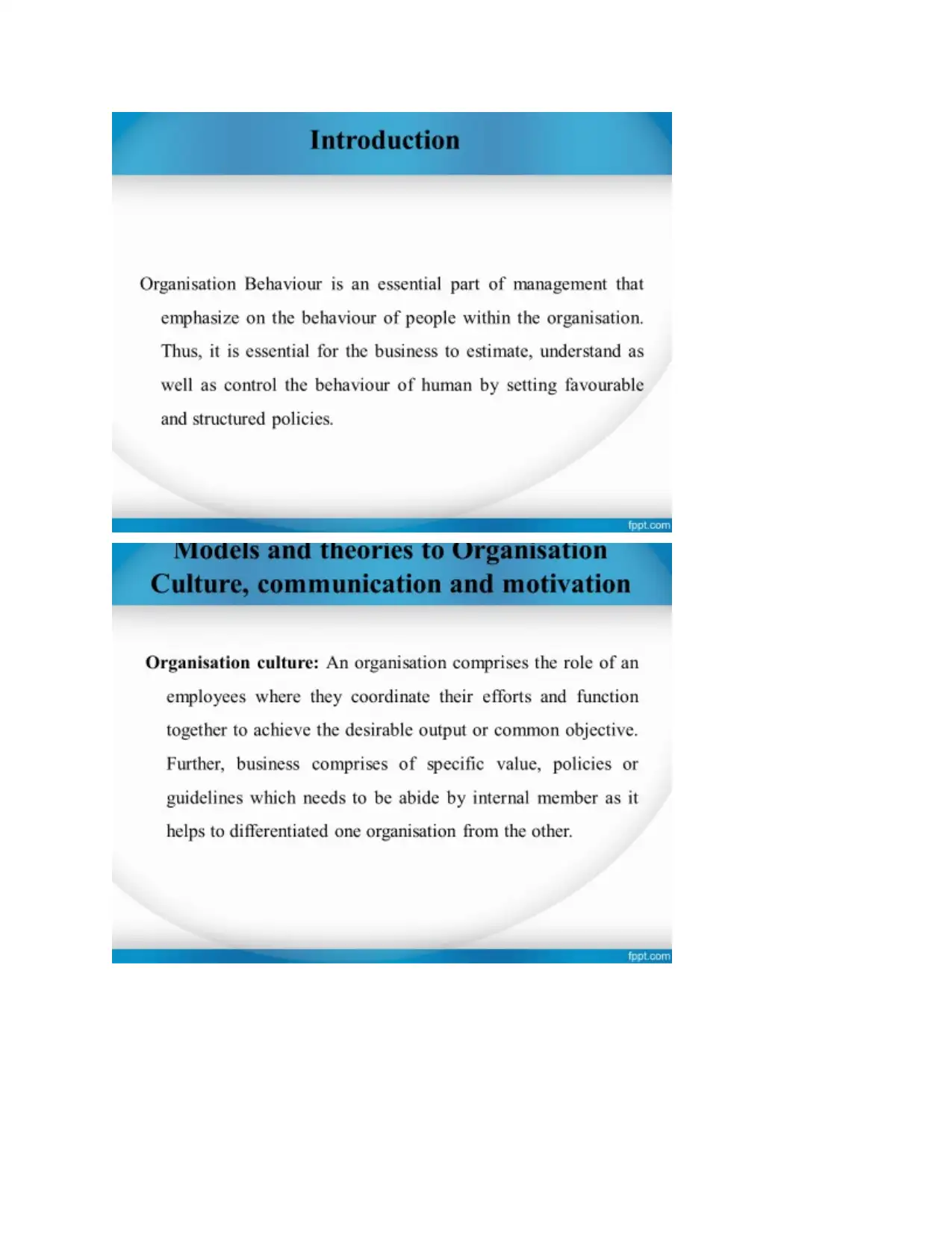
Paraphrase This Document
Need a fresh take? Get an instant paraphrase of this document with our AI Paraphraser
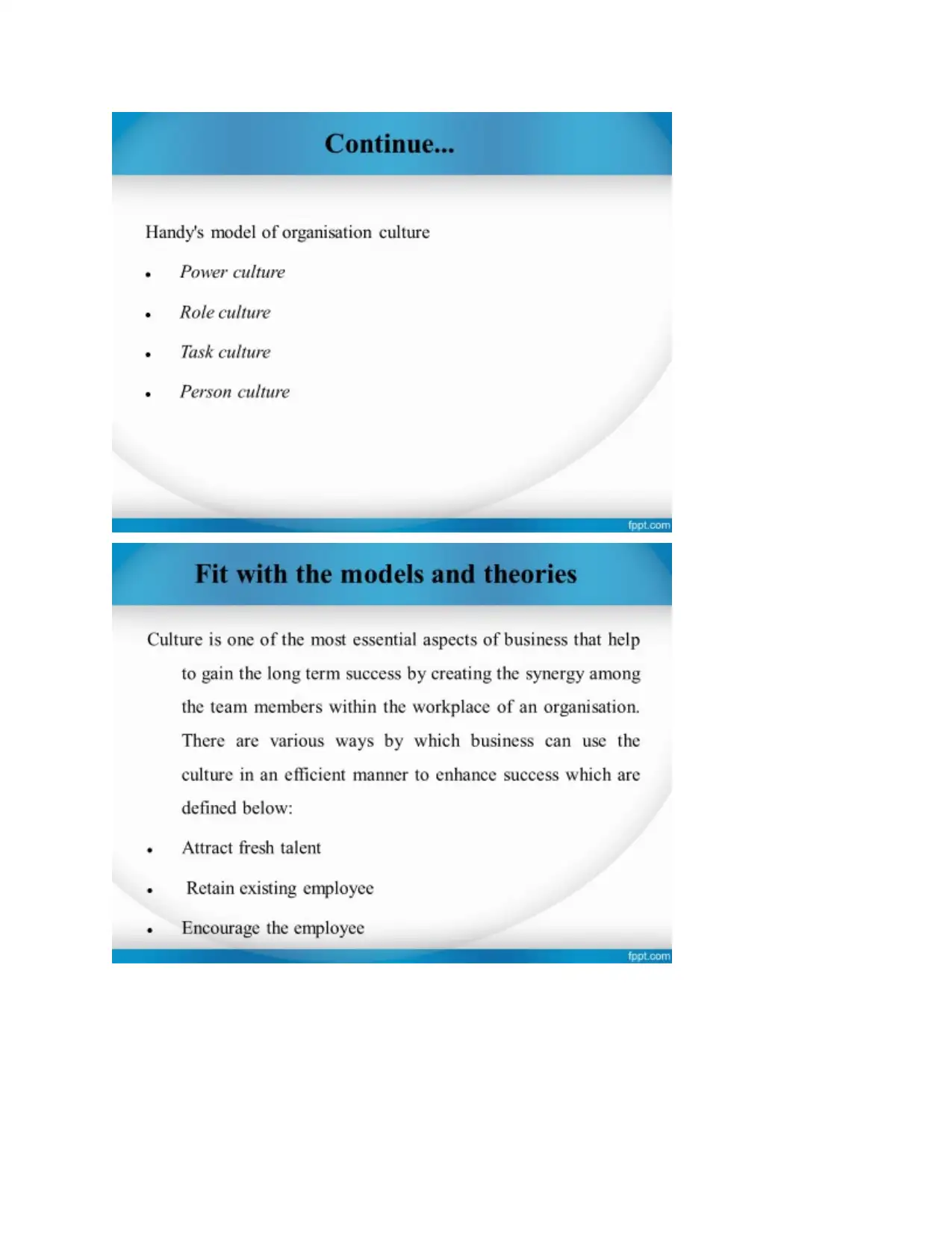
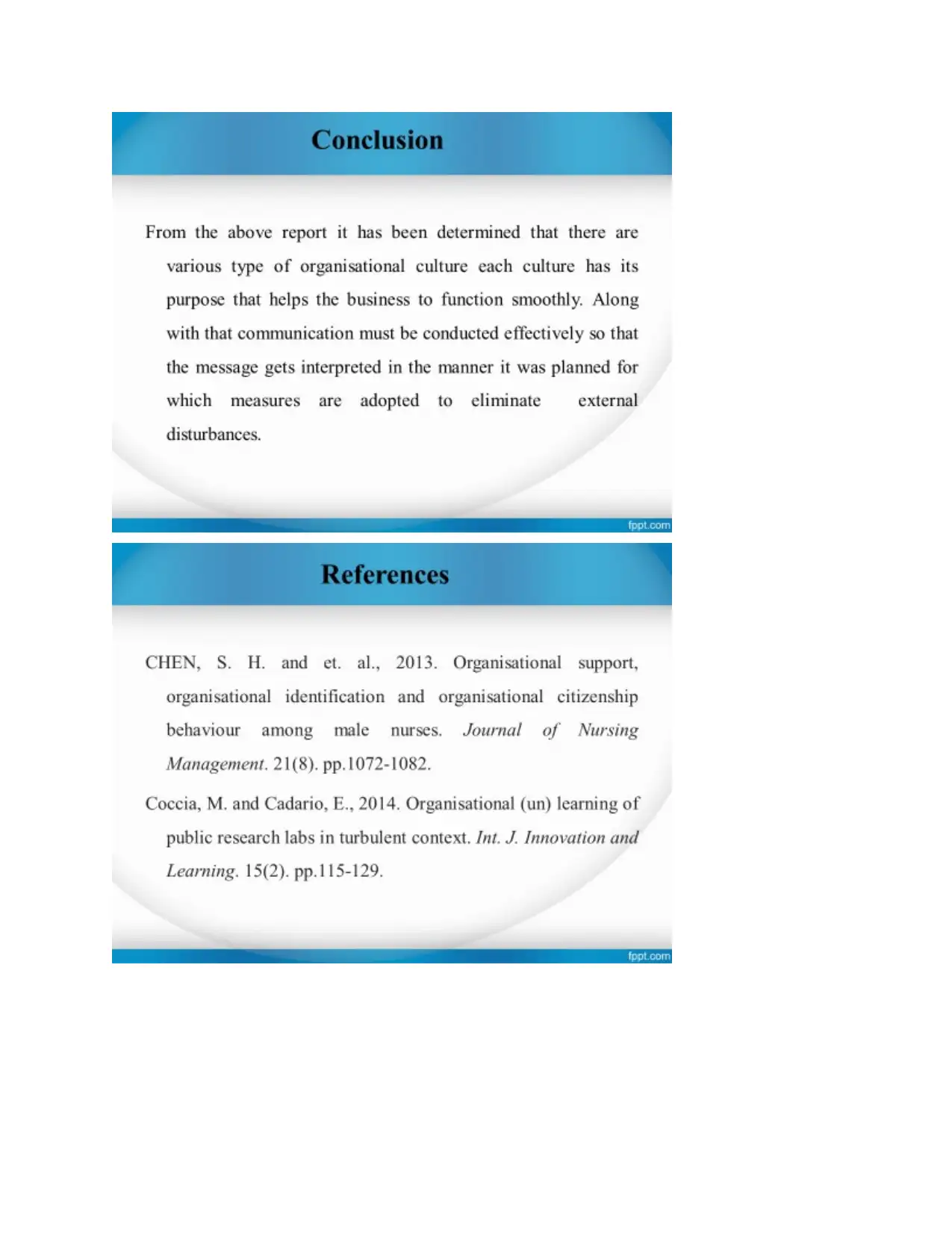
⊘ This is a preview!⊘
Do you want full access?
Subscribe today to unlock all pages.

Trusted by 1+ million students worldwide
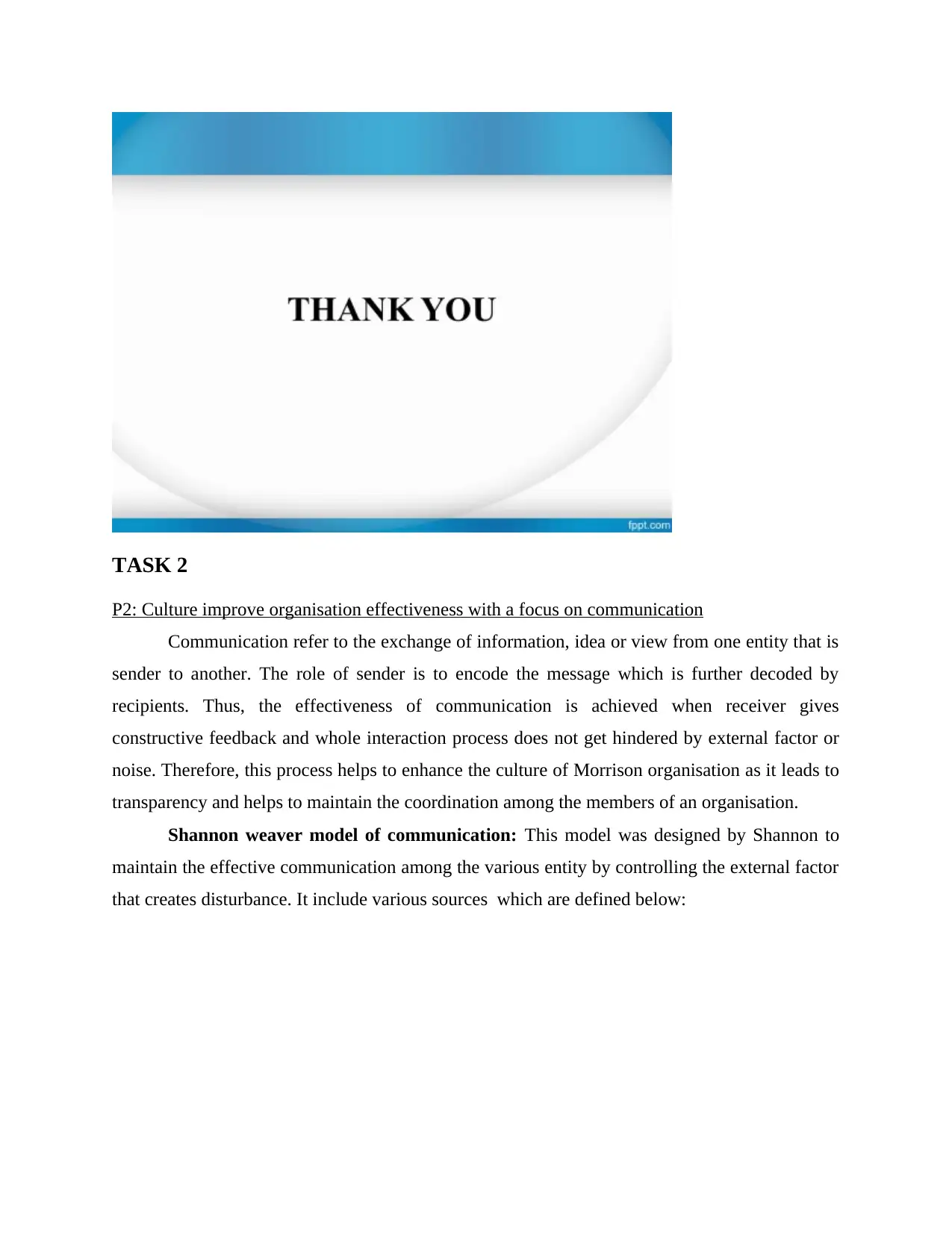
TASK 2
P2: Culture improve organisation effectiveness with a focus on communication
Communication refer to the exchange of information, idea or view from one entity that is
sender to another. The role of sender is to encode the message which is further decoded by
recipients. Thus, the effectiveness of communication is achieved when receiver gives
constructive feedback and whole interaction process does not get hindered by external factor or
noise. Therefore, this process helps to enhance the culture of Morrison organisation as it leads to
transparency and helps to maintain the coordination among the members of an organisation.
Shannon weaver model of communication: This model was designed by Shannon to
maintain the effective communication among the various entity by controlling the external factor
that creates disturbance. It include various sources which are defined below:
P2: Culture improve organisation effectiveness with a focus on communication
Communication refer to the exchange of information, idea or view from one entity that is
sender to another. The role of sender is to encode the message which is further decoded by
recipients. Thus, the effectiveness of communication is achieved when receiver gives
constructive feedback and whole interaction process does not get hindered by external factor or
noise. Therefore, this process helps to enhance the culture of Morrison organisation as it leads to
transparency and helps to maintain the coordination among the members of an organisation.
Shannon weaver model of communication: This model was designed by Shannon to
maintain the effective communication among the various entity by controlling the external factor
that creates disturbance. It include various sources which are defined below:
Paraphrase This Document
Need a fresh take? Get an instant paraphrase of this document with our AI Paraphraser
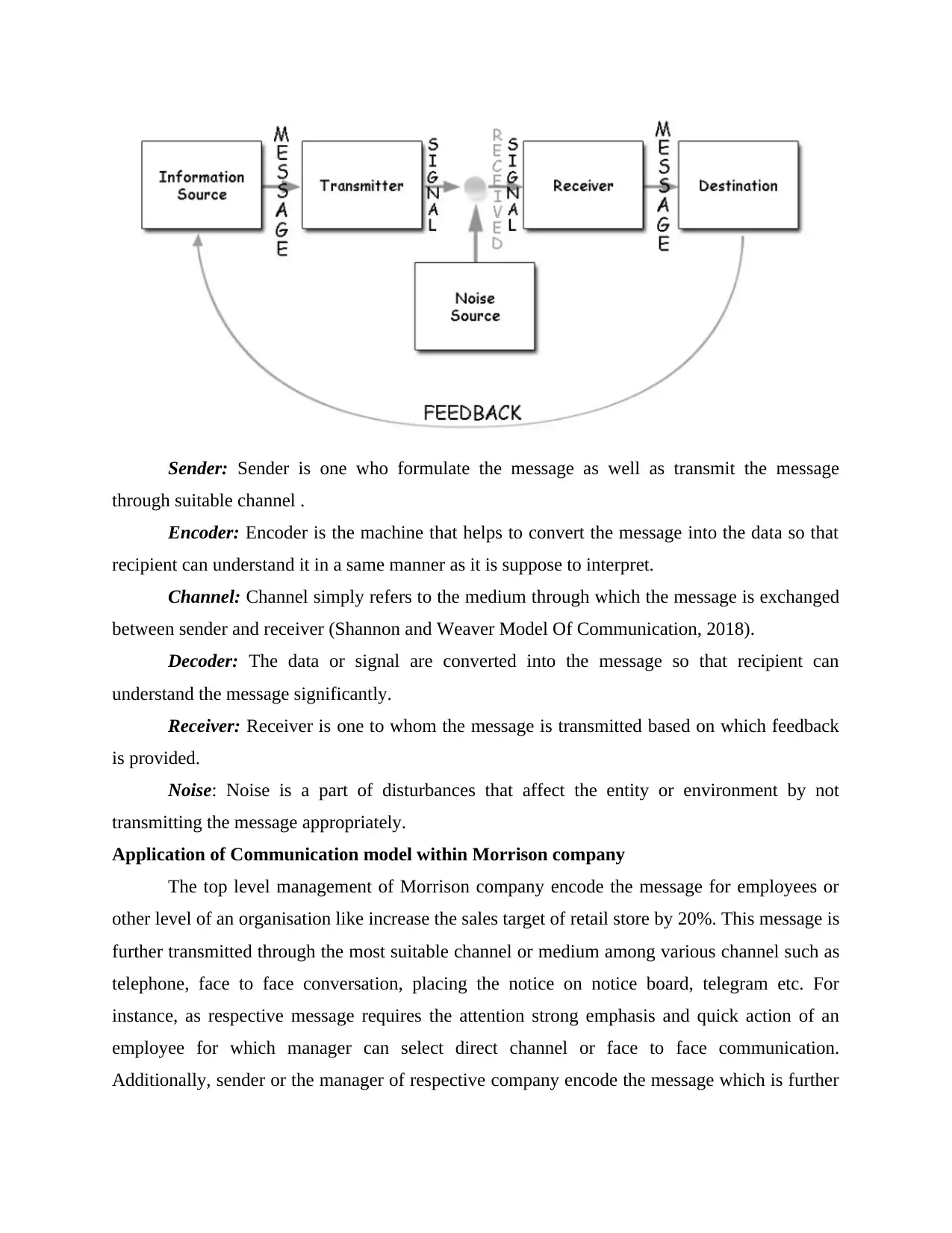
Sender: Sender is one who formulate the message as well as transmit the message
through suitable channel .
Encoder: Encoder is the machine that helps to convert the message into the data so that
recipient can understand it in a same manner as it is suppose to interpret.
Channel: Channel simply refers to the medium through which the message is exchanged
between sender and receiver (Shannon and Weaver Model Of Communication, 2018).
Decoder: The data or signal are converted into the message so that recipient can
understand the message significantly.
Receiver: Receiver is one to whom the message is transmitted based on which feedback
is provided.
Noise: Noise is a part of disturbances that affect the entity or environment by not
transmitting the message appropriately.
Application of Communication model within Morrison company
The top level management of Morrison company encode the message for employees or
other level of an organisation like increase the sales target of retail store by 20%. This message is
further transmitted through the most suitable channel or medium among various channel such as
telephone, face to face conversation, placing the notice on notice board, telegram etc. For
instance, as respective message requires the attention strong emphasis and quick action of an
employee for which manager can select direct channel or face to face communication.
Additionally, sender or the manager of respective company encode the message which is further
through suitable channel .
Encoder: Encoder is the machine that helps to convert the message into the data so that
recipient can understand it in a same manner as it is suppose to interpret.
Channel: Channel simply refers to the medium through which the message is exchanged
between sender and receiver (Shannon and Weaver Model Of Communication, 2018).
Decoder: The data or signal are converted into the message so that recipient can
understand the message significantly.
Receiver: Receiver is one to whom the message is transmitted based on which feedback
is provided.
Noise: Noise is a part of disturbances that affect the entity or environment by not
transmitting the message appropriately.
Application of Communication model within Morrison company
The top level management of Morrison company encode the message for employees or
other level of an organisation like increase the sales target of retail store by 20%. This message is
further transmitted through the most suitable channel or medium among various channel such as
telephone, face to face conversation, placing the notice on notice board, telegram etc. For
instance, as respective message requires the attention strong emphasis and quick action of an
employee for which manager can select direct channel or face to face communication.
Additionally, sender or the manager of respective company encode the message which is further
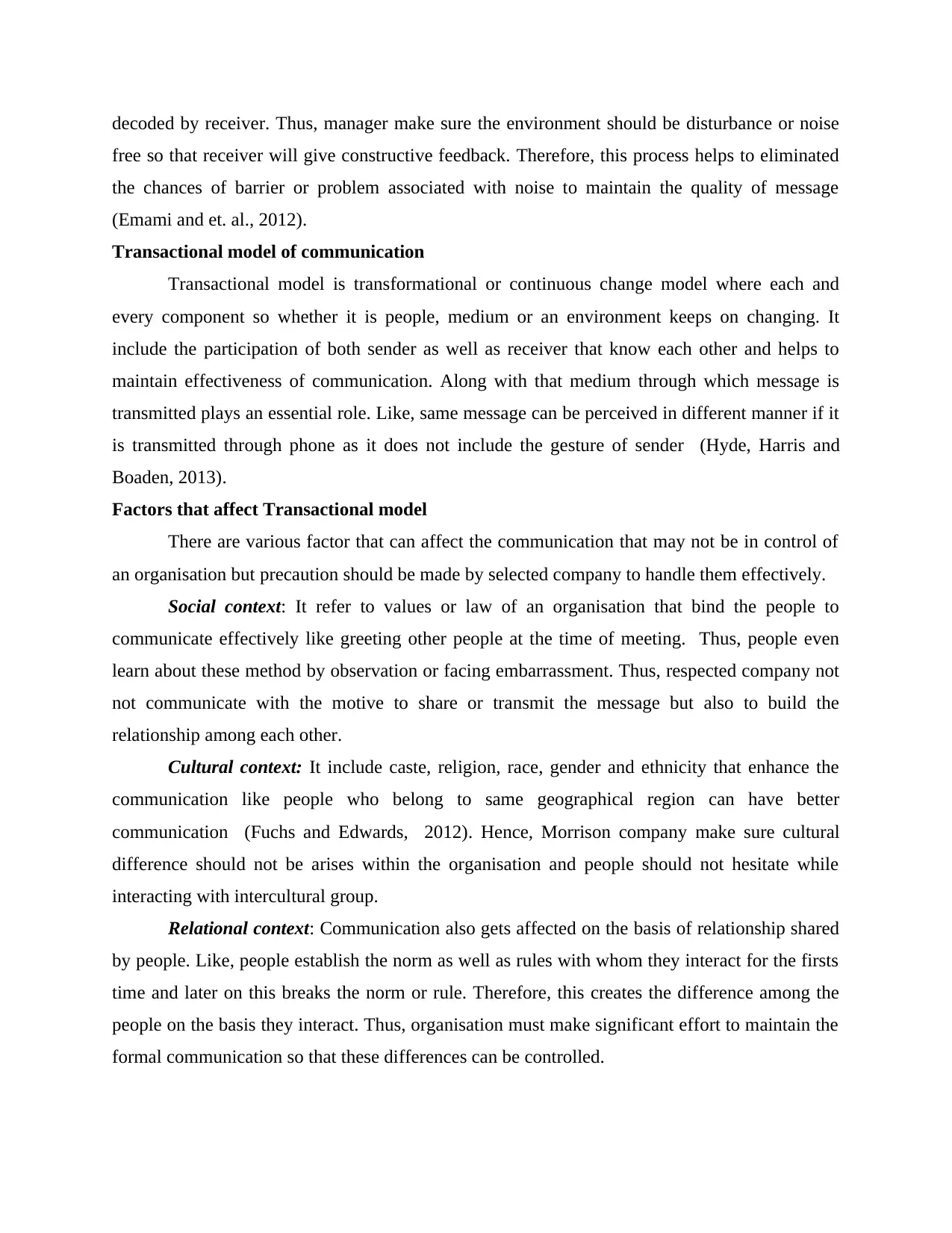
decoded by receiver. Thus, manager make sure the environment should be disturbance or noise
free so that receiver will give constructive feedback. Therefore, this process helps to eliminated
the chances of barrier or problem associated with noise to maintain the quality of message
(Emami and et. al., 2012).
Transactional model of communication
Transactional model is transformational or continuous change model where each and
every component so whether it is people, medium or an environment keeps on changing. It
include the participation of both sender as well as receiver that know each other and helps to
maintain effectiveness of communication. Along with that medium through which message is
transmitted plays an essential role. Like, same message can be perceived in different manner if it
is transmitted through phone as it does not include the gesture of sender (Hyde, Harris and
Boaden, 2013).
Factors that affect Transactional model
There are various factor that can affect the communication that may not be in control of
an organisation but precaution should be made by selected company to handle them effectively.
Social context: It refer to values or law of an organisation that bind the people to
communicate effectively like greeting other people at the time of meeting. Thus, people even
learn about these method by observation or facing embarrassment. Thus, respected company not
not communicate with the motive to share or transmit the message but also to build the
relationship among each other.
Cultural context: It include caste, religion, race, gender and ethnicity that enhance the
communication like people who belong to same geographical region can have better
communication (Fuchs and Edwards, 2012). Hence, Morrison company make sure cultural
difference should not be arises within the organisation and people should not hesitate while
interacting with intercultural group.
Relational context: Communication also gets affected on the basis of relationship shared
by people. Like, people establish the norm as well as rules with whom they interact for the firsts
time and later on this breaks the norm or rule. Therefore, this creates the difference among the
people on the basis they interact. Thus, organisation must make significant effort to maintain the
formal communication so that these differences can be controlled.
free so that receiver will give constructive feedback. Therefore, this process helps to eliminated
the chances of barrier or problem associated with noise to maintain the quality of message
(Emami and et. al., 2012).
Transactional model of communication
Transactional model is transformational or continuous change model where each and
every component so whether it is people, medium or an environment keeps on changing. It
include the participation of both sender as well as receiver that know each other and helps to
maintain effectiveness of communication. Along with that medium through which message is
transmitted plays an essential role. Like, same message can be perceived in different manner if it
is transmitted through phone as it does not include the gesture of sender (Hyde, Harris and
Boaden, 2013).
Factors that affect Transactional model
There are various factor that can affect the communication that may not be in control of
an organisation but precaution should be made by selected company to handle them effectively.
Social context: It refer to values or law of an organisation that bind the people to
communicate effectively like greeting other people at the time of meeting. Thus, people even
learn about these method by observation or facing embarrassment. Thus, respected company not
not communicate with the motive to share or transmit the message but also to build the
relationship among each other.
Cultural context: It include caste, religion, race, gender and ethnicity that enhance the
communication like people who belong to same geographical region can have better
communication (Fuchs and Edwards, 2012). Hence, Morrison company make sure cultural
difference should not be arises within the organisation and people should not hesitate while
interacting with intercultural group.
Relational context: Communication also gets affected on the basis of relationship shared
by people. Like, people establish the norm as well as rules with whom they interact for the firsts
time and later on this breaks the norm or rule. Therefore, this creates the difference among the
people on the basis they interact. Thus, organisation must make significant effort to maintain the
formal communication so that these differences can be controlled.
⊘ This is a preview!⊘
Do you want full access?
Subscribe today to unlock all pages.

Trusted by 1+ million students worldwide
1 out of 18
Related Documents
Your All-in-One AI-Powered Toolkit for Academic Success.
+13062052269
info@desklib.com
Available 24*7 on WhatsApp / Email
![[object Object]](/_next/static/media/star-bottom.7253800d.svg)
Unlock your academic potential
Copyright © 2020–2025 A2Z Services. All Rights Reserved. Developed and managed by ZUCOL.





